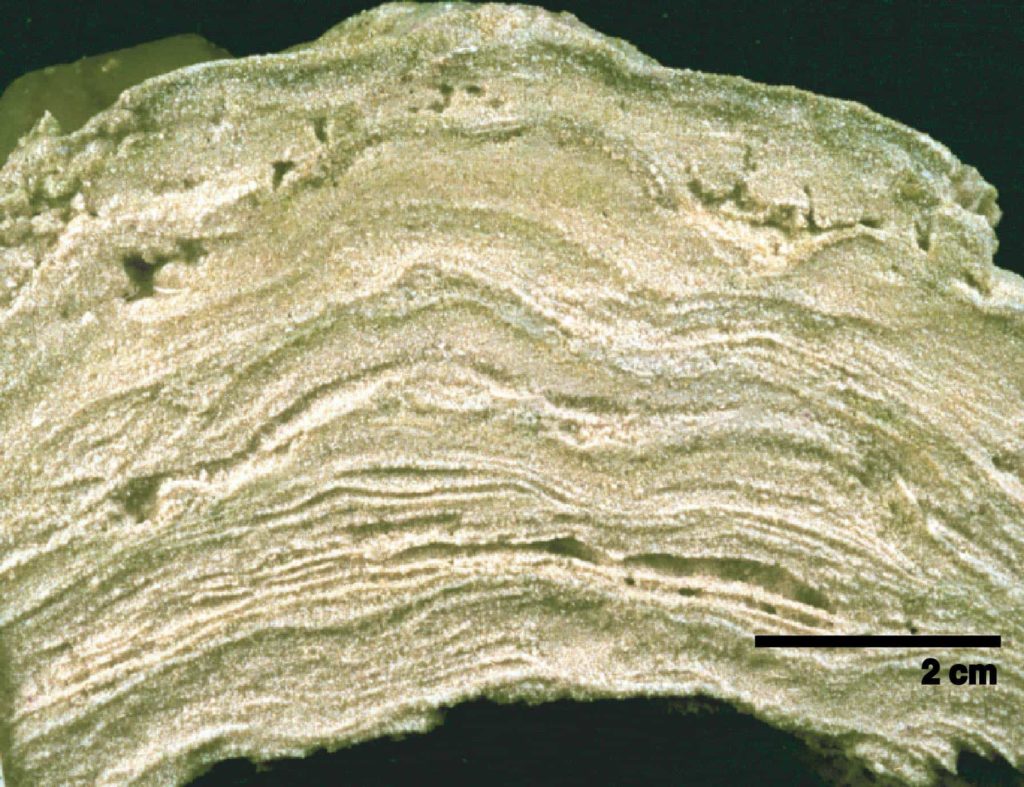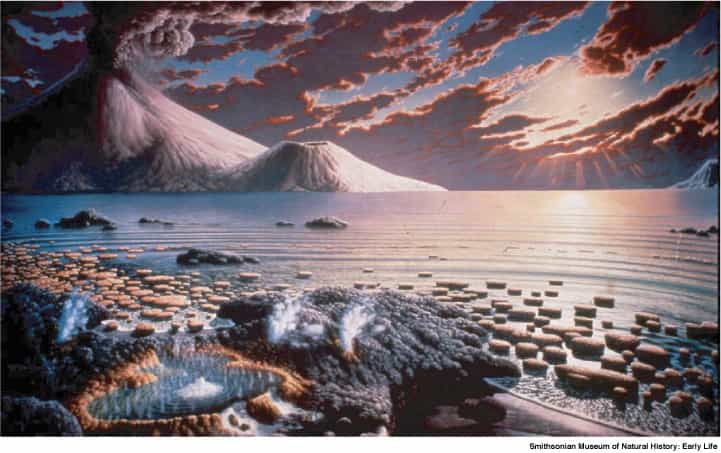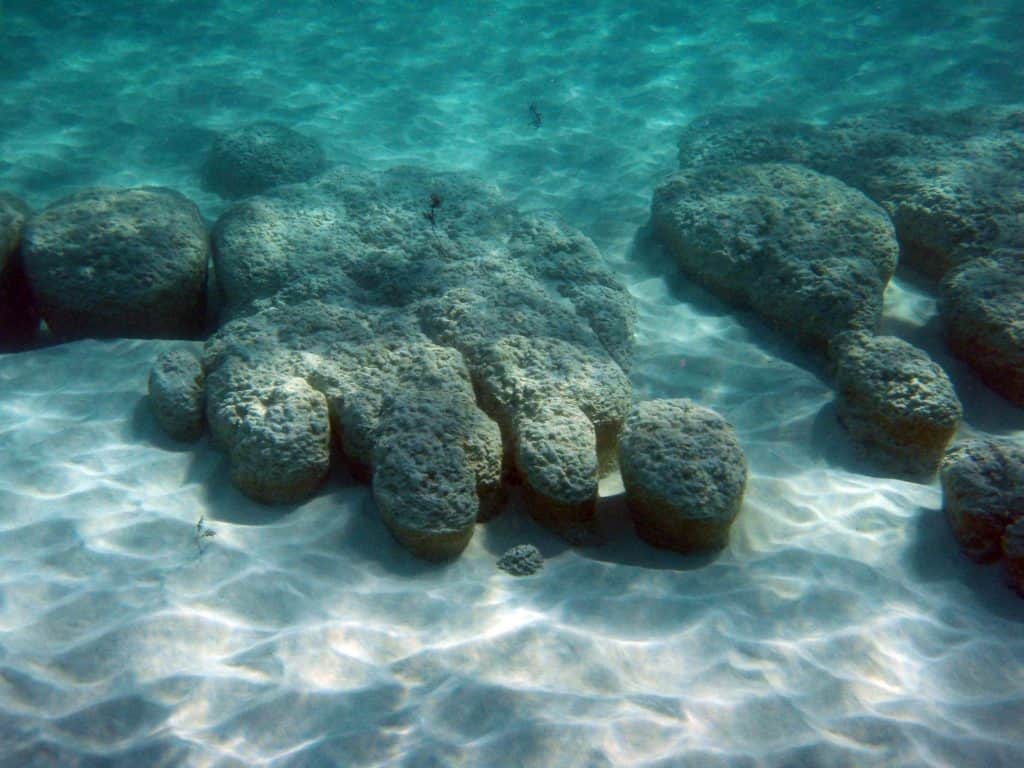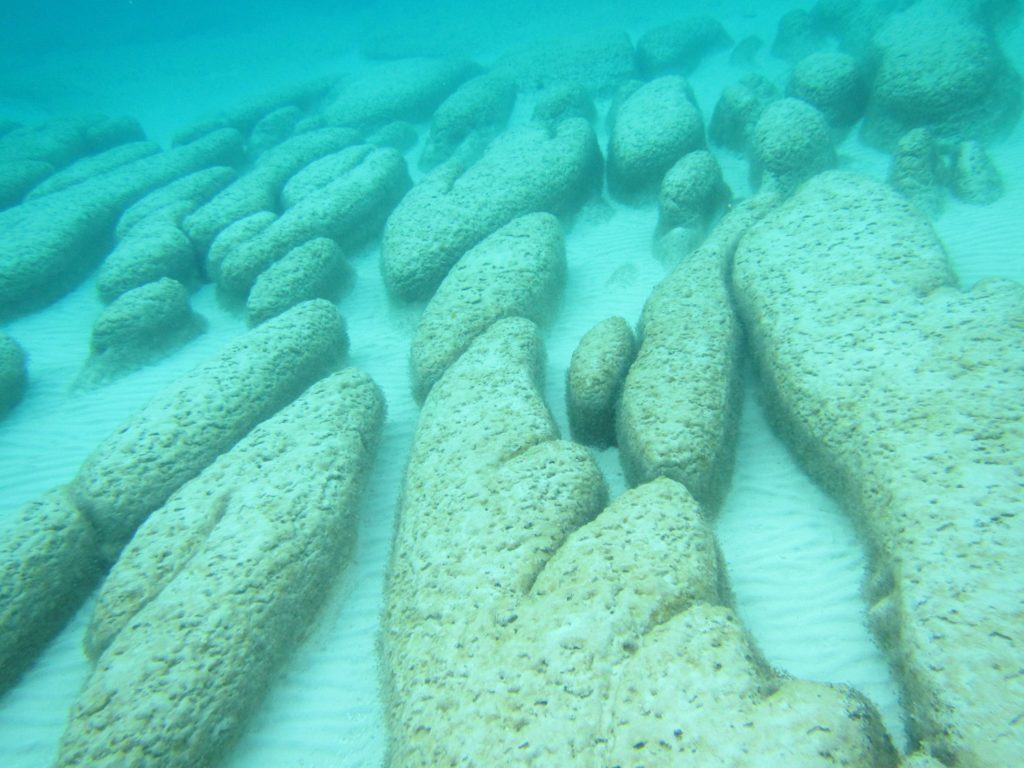Stromatolites
What are “Stromatolites”?
Stromatolites are a unique and special type of reef. Unlike most present-day reefs, which are composed of coral, stromatolites are formed by microorganisms. The characteristic feature of these microbial reefs is a layered internal structure–indeed, ‘stromatolite’ is derived from Greek meaning ‘layered rock’.
Why are Stromatolites important?
Stromatolites are the oldest known macrofossils, dating back over 3 billion years (Earth is ~4.5 billion years old). Dominating the fossil record for 80% of Earth history, they are an important source of information on the early development of life on Earth and possibly other planets. Moreover, scientists believe that the photosynthetic activity of cyanobacteria, the most important group of stromatolite-forming microorganisms, generated the oxygen in our atmosphere. This oxygen allowed the evolution of higher forms of life, including humans!
What is special about Bahamian Stromatolites?
Stromatolites are rare in today’s oceans. However, they can be found in several localities along the margins of Exuma Sound. The Bahamian stromatolites are living relatives of Earth’s oldest reefs. Bahamian stromatolites are unique in that they are the only known examples of present-day stromatolites growing in open ocean conditions, equivalent to those of many 1 to 2 billion year-old Precambrian platforms.
Why study Stromatolites?
Living stromatolites form a compact ecosystem that is elegantly simple. A relatively small group of micro-organisms interact with the environment to form massive geologic structures. As such, stromatolites are an ideal model system for investigating fundamental questions in biology and geology. Studies of the stromatolite system provide models for biogeochemical cycling, population dynamics, and mineral formation in modern and ancient environments.
Research Initiative on Bahamian Stromatolites
An international team of biologists and geologists is investigating fundamental processes and biological-geological interactions in living stromatolites in the Exuma Cays. This project is known as the Research Initiative on Bahamian Stromatolites (RIBS). Dr. Pamela Reid, President of Bahamas Marine EcoCentre, is leader of the RIBS team.
For a file listing over 70 RIBS publications on stromatolites,
click here.
Making North America: Stromatolites on PBS
Bahamian stromatolites are featured in mini series Making North America, which first aired on PBS in November 2015. A clip showing the stromatolite portion of Episode 2 can be seen below.



Shark Bay Stromatolites

Initial work by the Research Initiative on Bahamian Stromatolites led to questions about stromatolites in Shark Bay, Western Australia—the worlds most extensive and diverse system of living stromatolites. Hamelin Pool, a hypersaline embayment within Shark Bay, has 135 km of shoreline fringed with microbial mats and stromatolites. An international team, involving several RIBS researchers, led by University of Miami in collaboration with the Geological Survey of Western Australia spent three years collecting data to map Hamelin Pool. The map produced revealed eight “Stromatolite Provinces”, each characterized by distinct morphological structures, many of which were previously unknown. Results also altered previous growth models for Shark Bay stromatolites and documented the importance of mineral precipitation in the formation of the stromatolite framework, a feature shared with Precambrian stromatolites that date back three billion years.
The new findings on morphological diversity, microbial communities, and mineral precipitation in living stromatolites in Shark Bay indicate the importance of this system as a window into early Earth, providing a basis for reconstructing ancient environments and understanding how microbial communities interacted with these environments.
The study, titled “New multi-scale perspectives on the stromatolites of Shark Bay, Western Australia,” was published in the Feb. 3 2016 online edition of the Nature journal Scientific Reports. Studies of Shark Bay stromatolites are ongoing, as a collaboration between members of the Research Initiative on Bahamian Stromatolites and Erica Suosaari, Bush Heritage Australia.
Media and other useful Shark Bay links
Bacterial Structures May Help Search for Life On Other Planets
Nature World News. Click to see article
Modern, Weird Microbe Ecosystems May Reveal Clues to Early Life on Earth
Science World Report. Click to see article
Modern microbial ecosystems provide window to early life on Earth
Phys.org. Click to see article
Bush Heritage, Hamelin Pool, Hamelin Station Reserve
Places we protect. Click to see article
Hamelin: the Key to our past. Click to see article
Hamelin Stromatolite Contribution Series
Suosaari, E.P., Reid, R.P., Oehlert, A.M., Playford, P.E., Steffensen, C.K., Andres, M.S., Suosaari, G.V., Milano, G.R. and Eberli, G.P. Stromatolite Provinces of Hamelin: Physiographic control on stromatolites and associated facies. Journal of Sedimentary Research, in press.
Suosaari, E.P., Awramik, S.M., Reid, R.P., Stolz, J.F., and Grey, K. 2018. Living Dendrolitic Microbial mats in Hamelin Pool, Shark Bay, Western Australia. Geosciences 8(6):212 (17 p).
Babiloni, J., Conesa, A., Casaburi, G., Pereira, C., Louyakis, A.S., Reid, R.P., Foster, J.S. (2018) Comparative metagenomics of the dominant stromatolite-forming mats of Hamelin Pool, Shark Bay, Western Australia. Frontiers in Microbiology 9: Article 1359; https://doi.org/10.3389/fmicb.2018.01359.
Suosaari, E.P., Reid, R.P., Abreu Araujo, T.A., Playford, P.E., Holley, D.K., McNamara, J.K., and Eberli, G.P. 2017, Environmental pressures influencing living stromatolites in Hamelin Pool, Shark Bay, Western Australia, PALAIOS, v 31, p. 483-496; http://www.bioone.org/doi/full/10.2110/palo.2016.023.

